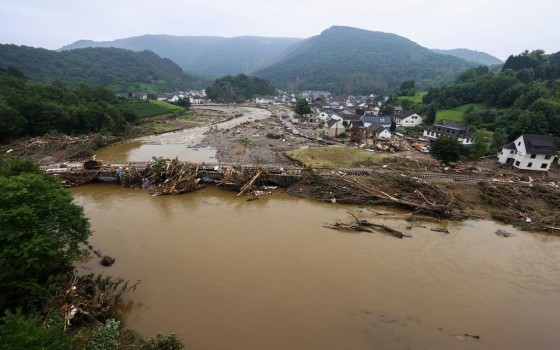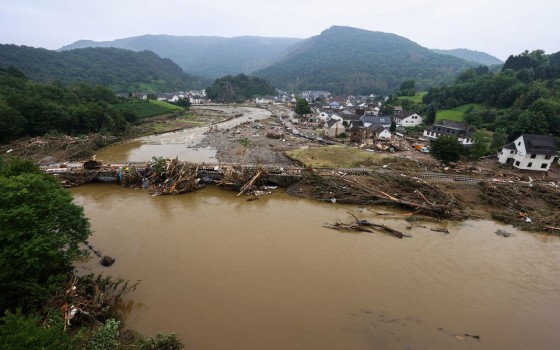UN report: Natural disasters cost the world about $2.3 trillion annually and have displaced 240 million people internally.

- Europe and Arabs
- Wednesday , 28 May 2025 6:22 AM GMT
Geneva: Europe and the Arabs
A new UN report has revealed that the world is dangerously underestimating the cost of natural disasters, warning that actual losses could reach $2.3 trillion annually, ten times what was previously thought, with cascading impacts on healthcare, housing, education, and employment. According to the UN Daily News, the report, published by the UN Office for Disaster Risk Reduction, highlights current estimates that the global economic impact of natural emergencies such as earthquakes, landslides, and floods likely reaches $200 billion annually.
However, Jeanty Kirsch-Wood, director of the agency's Division of Risk Analysis and Global Reporting, explained that these estimates "are only a fraction of the true costs," which are approaching $2.3 trillion.
Speaking to reporters in Geneva, she said that the world has been dangerously underestimating and underestimating the impact of disasters on progress towards sustainable development. Disasters affect us all
According to the report, people born in 1990 have a 63% chance of experiencing a once-in-100-year catastrophic flood in their lifetime. This probability rises to 86% for a child born in 2025.
Ms. Kirsch-Wood said these events affect us all, adding that the cost of extreme weather events is measured not only in destroyed assets, but also in lost years of health, education, and opportunities.
Unsustainable Humanitarian Response
The UN official explained that healthcare, education, and employment are increasingly impacted by emergencies, increasing national debt burdens and slowing recovery times in already vulnerable countries. This, in turn, contributes to an “unsustainable and unsupportable humanitarian response,” as countries struggle with a growing number of increasingly severe climate shocks.
According to the UN agency, financial losses from disasters have doubled over the past two decades.
The findings of the new report include proposals for how the international community can work together on sustainable investments to withstand future disasters and thus reduce the burden on governments. Ms. Kirsch-Wood says that most of the costs caused by climate events are preventable. In the future, the challenge will be to “better align our financing systems” and “optimally utilize public and private investments to ensure we minimize the burden on governments,” adding that the report offers such solutions.
Millions Displaced
The report states that nearly 240 million people were internally displaced by disasters between 2014 and 2023. China and the Philippines each recorded more than 40 million displaced people, while India, Bangladesh, and Pakistan reported figures ranging from 10 to 30 million.
The report warned that developing countries and vulnerable groups disproportionately pay the heaviest price for climate events.
UN Secretary-General António Guterres said the report “shows the devastating toll that disasters are currently taking, hitting vulnerable groups hardest... and makes clear that, on our current trajectory, the costs will continue to rise as the climate crisis worsens.” Guterres added, "But the report also shows that by strengthening and sustaining investment in disaster risk reduction and prevention, we can slow this trend and reap economic benefits—saving lives and livelihoods while driving growth and prosperity, helping to achieve the Sustainable Development Goals."
Reversing the Current Trend
However, existing tools—such as flood protection and early warning systems—can help the most affected countries reduce the rising climate bill.
Kamal Kishore, the UN Secretary-General's Special Representative for Disaster Risk Reduction, said that increased investment in risk reduction and resilience can reverse the current trend.
Kishore added, "When riverine communities have access to scientific tools to plan their land use, when they have the resources to build flood protection systems, and when they have early warning systems, they not only reduce damage and losses from floods, but also create conditions for prosperity and sustainable growth in their communities."














No Comments Found